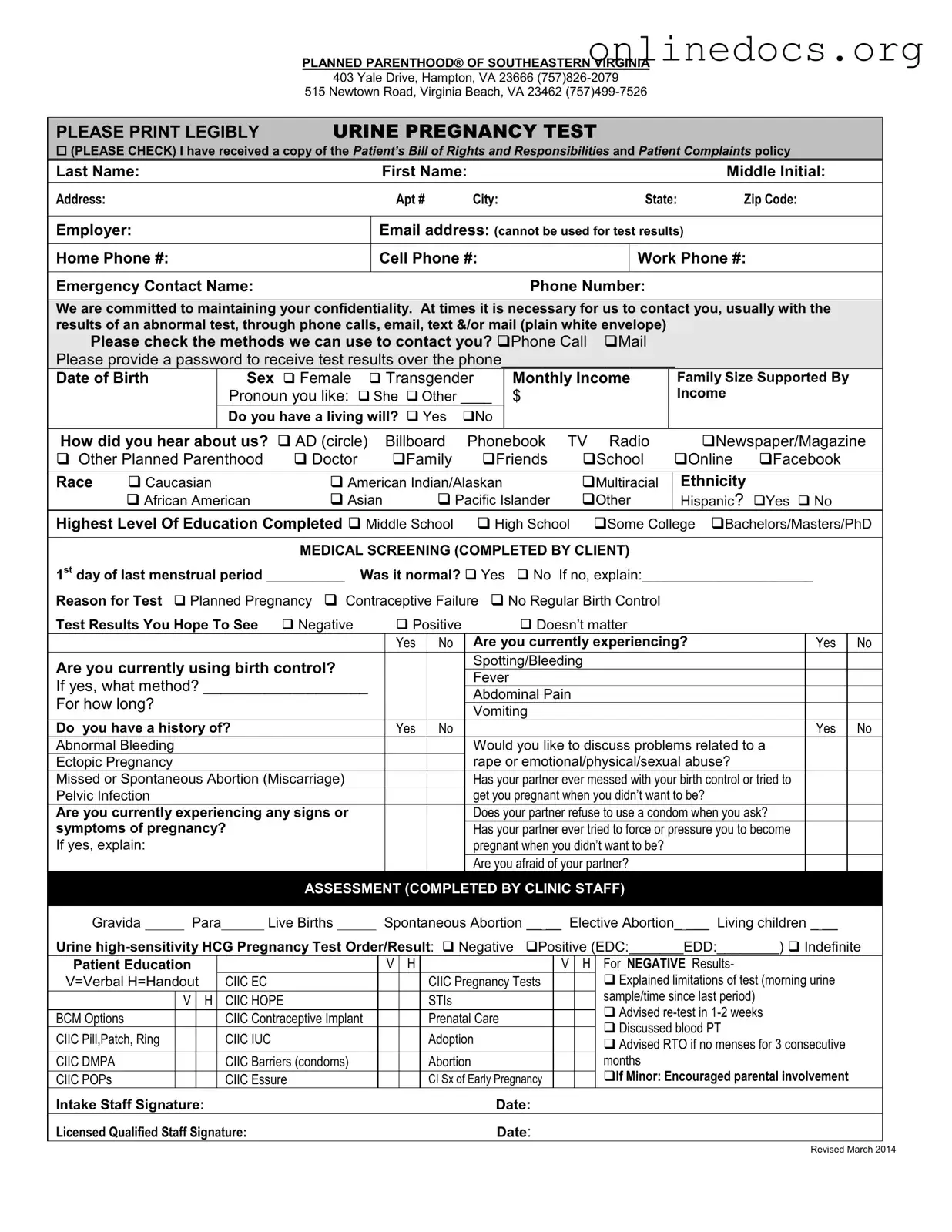The Patient Registration Form is a document commonly used in healthcare settings to collect essential information from patients before receiving services. Similar to the Planned Parenthood Proof form, it gathers personal details such as name, address, and contact information. It also often includes questions about medical history and insurance coverage. Both forms aim to ensure that healthcare providers have the necessary information to offer appropriate care while maintaining patient confidentiality.
The Informed Consent Form is another document that shares similarities with the Planned Parenthood Proof form. This form is designed to ensure that patients understand the nature of the medical services they will receive. It outlines the risks, benefits, and alternatives associated with procedures or treatments. Like the Planned Parenthood form, it emphasizes the importance of patient comprehension and consent, allowing individuals to make informed choices about their healthcare.
A California Motorcycle Bill of Sale form is a legal document used to transfer ownership of a motorcycle from one person to another. It contains essential details, such as the motorcycle's make, model, year, and vehicle identification number (VIN), along with the seller's and buyer's information. Completing this form is crucial for both parties to ensure a clear and documented exchange of ownership. For more information, you can visit fillpdf-forms.com/.
The Medical History Questionnaire serves a similar purpose as the Planned Parenthood Proof form by collecting detailed information about a patient's past medical conditions, surgeries, and medications. This document helps healthcare providers assess potential risks and tailor their services accordingly. Both forms prioritize patient safety and aim to create a comprehensive understanding of each individual's health background.
The Privacy Notice is a critical document that informs patients about how their health information will be used and protected. Much like the Planned Parenthood Proof form, it emphasizes confidentiality and the importance of informed consent. Patients are made aware of their rights regarding their medical information, ensuring transparency in the healthcare process.
The Release of Information Form is another document that parallels the Planned Parenthood Proof form. This form allows patients to authorize the sharing of their medical information with other healthcare providers or institutions. It ensures that patients have control over who accesses their personal health data, thereby reinforcing the principles of confidentiality and informed consent present in the Planned Parenthood form.
The Financial Responsibility Agreement is similar in that it outlines the patient's obligations regarding payment for medical services. This document ensures that patients understand their financial responsibilities before receiving care, just as the Planned Parenthood Proof form ensures they are informed about the services provided. Both forms aim to foster clear communication between patients and healthcare providers.
Finally, the Appointment Confirmation Form is another document that shares a resemblance with the Planned Parenthood Proof form. This form typically includes details about the patient's upcoming appointment, including date, time, and location. Like the Planned Parenthood form, it serves to ensure that patients are adequately informed and prepared for their visit, contributing to a smoother healthcare experience.
